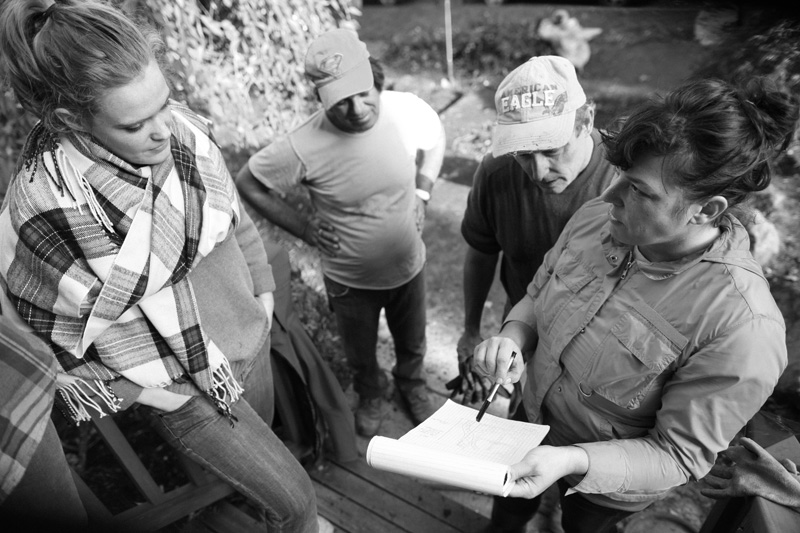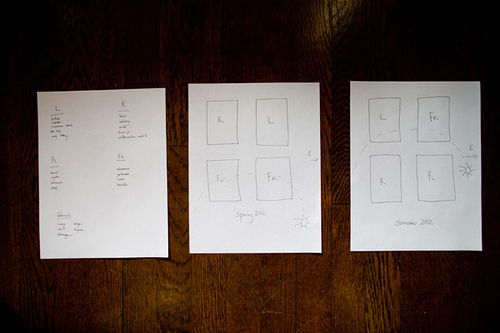Garden Planning 101 - Get Started Growing Your Own Food
Gardening and growing food are two of the most intuitive things I have ever done. This is not to say that I've always had a green thumb. In fact, I've killed every houseplant I've ever owned (including a cactus) and have officially given up on keeping them. All of this is to say that anyone can garden. The only skill you need is the ability to observe. You have this, I promise.
 Here is my disclaimer - it is helpful to recognize that information often varies from source to source. It is also worth noting that gardening "experts" often use a combination of education and experience to offer advice and instruction on how to grow a bountiful garden. That doesn't necessary mean it will always work for you. I have opinions about what works and what doesn't, but there are many options for home gardeners. I also garden organically, 100%. This means no chemicals for killing slugs, adhering to a strict crop rotation schedule, and in general making decisions based on what is best for the soil, not what is best for me personally.
Here is my disclaimer - it is helpful to recognize that information often varies from source to source. It is also worth noting that gardening "experts" often use a combination of education and experience to offer advice and instruction on how to grow a bountiful garden. That doesn't necessary mean it will always work for you. I have opinions about what works and what doesn't, but there are many options for home gardeners. I also garden organically, 100%. This means no chemicals for killing slugs, adhering to a strict crop rotation schedule, and in general making decisions based on what is best for the soil, not what is best for me personally.
Additionally, gardening requires one to work with nature, and this is not an exact science. There are many variables in gardening — sun exposure, latitude, time of year, watering schedule, and more will affect the success of any planting you do. So although certain factual information having to do with nutrient requirements and plant science will not change among the information you read, strategies will. It's up to you to decide what works best for you and your garden. With City Dirt, I aim to give you enough information and tools to make informed choices. Happily, there is often more than one answer.
Garden Musts When starting a garden at home there are three things to consider that will immediately contribute to your success.
1. You must have sun! At least 4 to 6 hours of direct sunlight a day for leafy greens and 10 to 12 for fruiting plants (hello tomatoes, cukes, and beans). I know you hear stories about how arugula is a weed and can grow in any condition, or perhaps about a tomato that doesn't need full sun, but trust me on these numbers. In order to have a successful (i.e. fully mature) plant, you need sun. Track your sun pattern starting NOW. At what point does it hit your property? At what time? Keep a sun log that tracks the sun across your yard at various times throughout the day, so you can watch how the sun changes with each season. Remember, it is winter, so in northern states the sun is sitting low on the horizon. If it tracks across the backyard now, it may arch over the house come summer.
2. Access to water is also a must. If you have to lug gallon jugs up some stairs and across your property, the odds of you watering often are slim. Make sure you have a hose and spigot handy. Anyone installing over 60 square feet of beds may also want to consider an automated watering system (drip irrigation, soaker hose or sprinkler system) so a nearby spigot will make your life way easier.
3. And finally, your soil should be considered. Many soils can be remediated or conditioned, but if your house sits on a cement block, is deeply water logged, or is built on sand, you may need to consider container planting as your only option.
With these three key components in mind, you must choose a space for your garden. Choose the space that best encompasses all three considerations and know that this may not be where you want to put your garden. Far too often, I see clients forcing gardens to work in their linear and square back yards. Let go of landscaping "rules" and put the garden in a spot where you can expect it to be successful. If you're not starting out with your best foot forward, you're inviting frustration and problem solving into your future.
As for how much space to allow, assuming you have the option, consider both your time commitment and your eating habits. There have been a handful of surveys and studies done to estimate yield per square foot in a garden, but these are widely disparate and I find them to be only remotely useful. Instead of trying to figure out how much space you'll need, determine how often you eat at home and just what food your family consumes. Every garden I grow in has waste each season, though that is never the goal. Do yourself a favor and be honest. Are you a stay-at-home parent or green-dedicated cook who makes three meals a day with vegetables as a major component? Then you'll need a big ol' garden. If you're hoping only to start small, if you're one person, or if you have an active lifestyle that keeps you out some nights, a smaller garden will suffice. I suggest starting with no more than 100 square feet your first year. Beds should be no more than 4 ½ feet wide, so you can reach in to the center with ease. I like a bed length to be 6 feet long, as well. (I explain why here.)
Sketch out the space to approximate scale and leave some surrounding space for future beds and/or a bed dedicated to perennials like sage, mint, or artichokes. Hang the sketch, think about it, and contemplate the space for a few weeks. This gives you an opportunity to change things around as you watch your sun pattern.
 Garden Wish List
To help determine the amount of space you will need, I encourage gardeners to sketch out a garden "wish list" of vegetables they'd like to grow. This should be your big garden brainstorm of the year. Get creative! Be bold! Think about vegetables, herbs or fruits that are not widely available — think like a cook. Basil can be found in grocery stores all year long, so why dedicate precious space to grow basil? Try something new like cinnamon basil for summer teas or salads, or lime basil for Asian-inspired dishes. Instead of the perfect red tomato, which a farmer will likely grow faster than you, why not try some odd shaped little tomatoes? I love White Currant tomatoes for their clear skin, pale yellow hue, and sweet acidic taste. Using this list, you will map out each of your garden beds over the course of the year, making certain to maximize your space by timing out the plantings appropriately.
Garden Wish List
To help determine the amount of space you will need, I encourage gardeners to sketch out a garden "wish list" of vegetables they'd like to grow. This should be your big garden brainstorm of the year. Get creative! Be bold! Think about vegetables, herbs or fruits that are not widely available — think like a cook. Basil can be found in grocery stores all year long, so why dedicate precious space to grow basil? Try something new like cinnamon basil for summer teas or salads, or lime basil for Asian-inspired dishes. Instead of the perfect red tomato, which a farmer will likely grow faster than you, why not try some odd shaped little tomatoes? I love White Currant tomatoes for their clear skin, pale yellow hue, and sweet acidic taste. Using this list, you will map out each of your garden beds over the course of the year, making certain to maximize your space by timing out the plantings appropriately.
